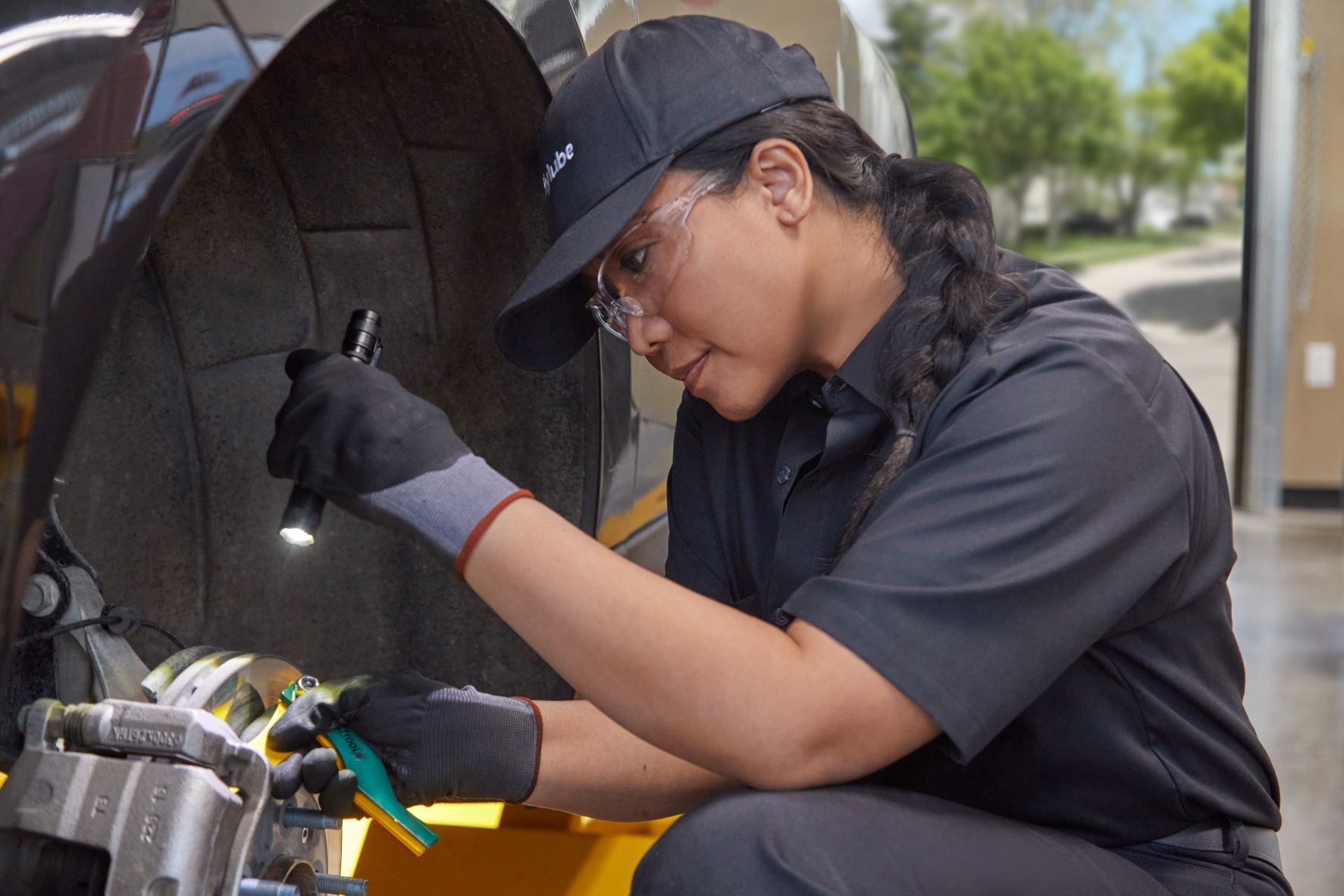Your car’s brakes are paramount for your safety and the well-being of everyone around you on the road. Recognizing the signs that your vehicle might need brake service is crucial, but understanding the financial aspect is equally important. If you’re asking, “How much to repair brakes on a car?” you’re in the right place. This guide will break down the costs associated with brake repair and replacement, helping you to be informed and prepared.
Factors Influencing Brake Repair Costs
The cost of brake repair isn’t a fixed figure; it varies based on several factors related to your driving habits, your vehicle, and the components required for replacement.
-
Driving Conditions: Where and how you drive significantly impacts brake wear. Stop-and-go traffic in city environments or driving in mountainous regions where you frequently use brakes to control speed downhill can dramatically shorten the lifespan of your brake system. Aggressive driving habits, such as hard braking, also contribute to faster wear and tear.
-
Parts and Materials Quality: The type of brake parts used, including brake pads, rotors, and calipers, plays a crucial role in both performance and cost.
- Brake Pad Material: “Severe duty” brake pads made with high carbon content can be more expensive upfront but are designed for enhanced durability and longevity, especially in demanding driving conditions. Standard semi-metallic brake pads are a common, more affordable option.
- Ceramic vs. Metallic Brake Pads: Ceramic brake pads are known for quieter operation and producing less brake dust, keeping your wheels cleaner. However, semi-metallic pads often offer superior braking performance, particularly in more demanding situations, and might be preferred for certain vehicles or driving styles.
- Manufacturer Recommendations: It’s crucial to always replace brake pads with those that meet or exceed the original manufacturer’s specifications for your specific vehicle. This ensures optimal performance and safety.
The Advantages of Regular Brake Maintenance and Replacement
Investing in regular brake maintenance and timely replacements can save you money and ensure your safety in the long run. Proactive brake care offers several key benefits:
-
Minimize Extensive Repairs: Neglecting regular brake service can lead to a dangerous “metal-to-metal” condition. This occurs when brake pads are completely worn, causing the metal backing plate to grind against the rotors or drums. Continuing to drive in this state is not only hazardous but can also result in significantly more expensive damage to rotors and drums, requiring their replacement in addition to the brake pads.
-
Extend Caliper Lifespan: Regularly replacing brake fluid is vital for maintaining the health of your brake calipers. Brake fluid can attract moisture over time, leading to corrosion and reduced braking efficiency. Consult your vehicle’s owner’s manual for recommended brake fluid replacement intervals. If you can’t find this information, a qualified technician can provide guidance.
-
Prevent Hydraulic System Corrosion: Contaminated brake fluid is a major cause of corrosion within the brake hydraulic system, particularly in vehicles equipped with Anti-lock Braking Systems (ABS). Routine brake fluid exchange helps to prevent corrosion and maintain the integrity of your entire braking system.
-
Ensure Road Safety: A well-maintained brake system is your vehicle’s most critical safety feature. It guarantees reliable vehicle control and responsiveness in diverse driving conditions. If you notice any signs of brake problems, such as squealing noises, vibrations, or a soft brake pedal, have your brake system inspected immediately to ensure your safety on the road.
 Service member using a flashlight to check a car
Service member using a flashlight to check a car
Alt text: Car technician inspecting vehicle brakes with flashlight for maintenance at auto service center.
Understanding the Costs: How Much to Repair Car Brakes?
Pinpointing an exact cost for brake repair is challenging as it’s influenced by various factors. Labor rates differ among auto repair shops, and parts prices vary across manufacturers and vehicle types. However, understanding typical cost ranges can help you budget for brake service.
-
Pads and Rotors are Typically Replaced Together: For optimal braking performance and safety, it’s generally recommended to replace brake rotors whenever you replace brake pads. Using new pads on worn rotors can lead to uneven wear, vibrations, and compromised braking efficiency. Plan to replace both pads and rotors simultaneously for a complete brake service.
-
Rotor Costs: Aftermarket brake rotors generally range in price from approximately $30 to $75 each. Prices can vary based on brand, quality, and vehicle model.
-
Labor Costs for Brake Service: Labor charges for brake service can range from $90 to $200 per hour, depending on the repair shop’s rates and location. A typical brake service, including pad and rotor replacement per axle, generally falls within the range of $200 to $500 at a professional service center. This is an estimated range and can fluctuate.
-
Caliper Service Costs: Brake calipers are often the most complex and costly components to service within the braking system. A single caliper can cost up to $130 or more, and prices can escalate for high-performance or specialized vehicles. Caliper service might involve cleaning, rebuilding, or complete replacement if they are severely corroded or malfunctioning.
-
Total Brake Repair Cost: A comprehensive brake repair, including the replacement of pads, rotors, and potentially calipers, can typically range from $200 to $800 per axle. The final cost is highly dependent on your vehicle type, the quality of parts chosen, and the extent of service required. Luxury vehicles or those requiring specialized brake components will often incur higher repair costs.
How to Get the Best Price for Brake Repair
To ensure you receive fair pricing and quality service, it’s wise to get quotes from multiple service providers. When seeking a brake repair quote, move beyond a simple question like, “How much for new brakes?”. Be prepared to answer questions that technicians will ask to provide an accurate estimate:
- Vehicle Type: Parts for European vehicles (like BMW, Mercedes, Audi, Jaguar) often cost more than those for domestic or Japanese makes. Additionally, European brake systems can differ, potentially requiring more labor time and thus increasing costs.
- Vehicle Model: The specific make and model are significant. For example, brake service for a heavy-duty truck like a Chevy 3500 Diesel will be more expensive than for a compact car like a Ford Fiesta. Factors such as vehicle weight, size, and drivetrain (2WD, 4WD, AWD) influence parts required and labor time.
- Driving Habits: If you frequently tow heavy loads or use your vehicle for severe-duty applications, you’ll need brake pads designed for those demands, which might affect the price.
- Material Preference: Brake pads are available in various materials—ceramic, semi-metallic, and organic, each with different performance characteristics and price points. Discuss your options with the technician to choose pads that suit your driving needs and budget.
- Parts Brand Preference: Do you prefer aftermarket, off-brand, or OEM (Original Equipment Manufacturer) brake pads? OEM parts are typically more expensive but are guaranteed to meet manufacturer standards. Aftermarket parts can offer cost savings, but quality can vary. Your choice will impact the final price.
Safety First: Prioritizing Brake Function Over Cost
While cost is a consideration, remember that your brakes are a critical safety system. Compromising on quality or delaying necessary repairs to save money can have serious consequences. While DIY brake service can save money for mechanically inclined individuals, brake work is a critical task that should be performed by professionals if you are not fully confident in your abilities.
If you prefer professional service, Jiffy Lube locations offer trained technicians ready to assist with your brake service needs.
What to Expect at Jiffy Lube for Brake Service
When you visit Jiffy Lube for brake service, you can expect a comprehensive and customer-focused approach:
- Driving Style Inquiry: Technicians will ask about your typical driving conditions and habits to recommend the most appropriate brake service and products.
- Initial Brake System Inspection: A visual inspection of your brake system will be performed with the wheels on to assess the initial condition.
- Detailed Brake Inspection with Tire Rotation: A more thorough brake inspection is available, often performed in conjunction with a tire rotation, providing a comprehensive system check.
- Brake Fluid Testing: Brake fluid will be tested for moisture contamination and the effectiveness of its additive package, crucial for system longevity and performance.
- Service Recommendations and Approval: You will receive clear service recommendations based on the inspection findings. No work will be performed without your explicit approval, ensuring transparency and control over costs.
- Post-Service Vehicle Check: After the brake service, your vehicle will be test-driven to verify proper operation and ensure the brakes are functioning as intended, giving you peace of mind.
With properly serviced brakes, you can drive confidently, knowing your vehicle will respond reliably when you need to stop.
Learn More About Brakes
Want to expand your knowledge about vehicle safety? Learn about the proper use of your emergency brake in this informative article.
Note: Service availability may vary by Jiffy Lube location. Please check with your local service center or visit jiffylube.com for specific services.

